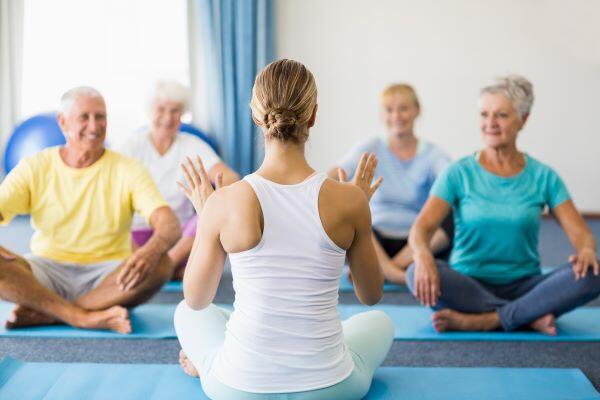
Low-impact Exercises for Seniors
Are you looking for exercises to help you stay healthy, but are unsure of where to start? As you get older you may have an increase in medical problems. Stiff joints, weakened bones, and stiffened muscles are just some of the issues you may be facing. Low-impact exercises for seniors are a great way to help stay active and reduce the impacts of diseases such as arthritis and osteoporosis. Low-impact exercises fall into these four categories: endurance, strength, flexibility and balance.
If you're already very active and participate in high-impact exercises, it's a great idea to alternate high and low-impact exercises throughout the week to challenge the body in different ways, while helping you to avoid injuries. Tracking the exercises you do can also help you keep your doctor informed and motivate you to continue to stay active. Here are some of the best fitness trackers for seniors. Some of these trackers will track your movements in the pool, cycling, and step counts.
Not only are low-impact exercises beneficial for your body physically, they can be very beneficial for your mental health. Regular exercise can improve your mood, cognitive function, and reduce stress and anxiety.
Regular exercise can improve your mood, cognitive function, and reduce stress and anxiety.
Most senior living communities will offer many of the activities in this list that you can participate in daily. If they don't offer something that interests you there are other ways you participate while out in the community.
Before engaging in any kind of exercise routing, especially if you have a chronic medical condition or injury, you should first consult with your doctor to make sure you can safely participate.
What are good low impact exercises?
Walking 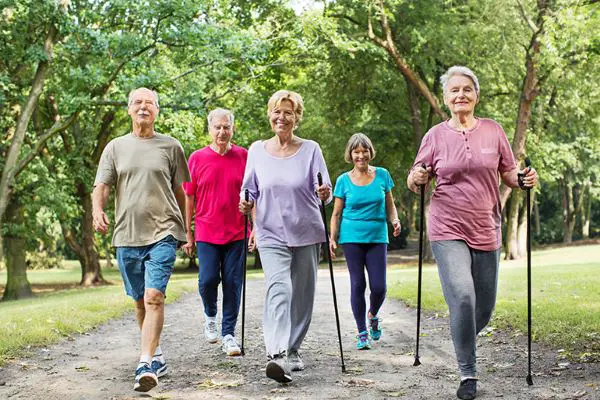
Walking is one of the best low-impact exercises you can do. It requires little to no planning and can be done anywhere. You can walk on natural trails in the area, on a treadmill, or around the mall. Stretching before taking a walk and making sure you have a good pair of walking shoes is very important, this will ensure you're going easy on your joints and prevent injury. While walking, make sure you pay attention to your posture. You'll want to stand up straight and keep your shoulders back. If you're just starting to get into a regular walking routine start off with 5-10 minutes and gradually increase your walking time each day until you get up to 30-60 minutes per day. Just like before your walk, after you're done you should stretch out the muscles you just worked such as your calves, ankles, and hamstrings.
What are the best strength training exercises for seniors?
 Swimming
Swimming
Swimming is a very beneficial way of exercising, especially for seniors. The water helps take all of the stress off of your joints and bones. Swimming helps work out all off the different muscle groups throughout your entire body and improves the flexibility for these muscles. Trying out different stroke types will help maximize your benefits and keep your routine fun and different each time.
You can choose to free swim or participate in a swimming class such as water aerobics. Water aerobics involves doing different movements in the water to help activate different muscles. Some examples of the exercises done in water aerobics include water walking. For this you'll go in about waist high deep water and simply walk flat footed around the pool. This will help improve your posture. Arm circles help strengthen your arm muscles by submerging up to your neck in water, putting your arms straight out to the sides, and moving them in circles forward and back. Other exercises might include using pool noodles and water weights (made of foam) to help give you resistance in the water. This gives you strength training opportunities without putting pressure on your joints. If your senior living community doesn't have a pool, check out local gyms that have indoor pools and offer classes such as YMCA.
Yoga 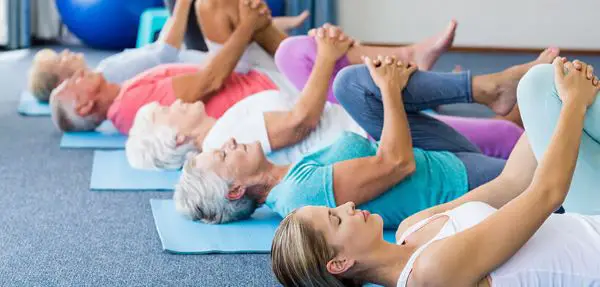
Yoga is a great low-impact exercise that involves stretching, working on balance, and strength training. There are over 80 different yoga postures and there are many modifications you can make to those poses to make sure you get the most benefit out of it. Yoga poses involve breathing and moving the body in line to give your body a good stretch. Many places offer special yoga classes targeted towards seniors. These classes offer beginner poses with relaxing music. Once you've become more comfortable with learning the poses and understanding how to correctly do them so you don't cause injury, you can easily do it in your room following videos online or on DVD. All you need is a yoga mat so you don't slip, however other equipment that is helpful to have are yoga socks, blocks, and straps.
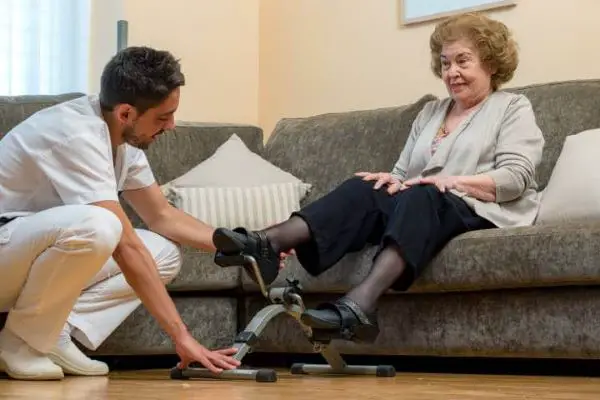 Cycling
Cycling
Although it may not seem like it, cycling is very gentle on your joints. Cycling can be done using a stationary bike indoors, or if you prefer more of a challenge and enjoy being outside you can use a bicycle. Another option is to use a portable pedal exerciser, which is a small peddler that can be used while watching tv. These peddlers can help with your comfort if you have neck and back problems because you can use it while sitting in your favorite comfortable chair. Cycling helps with easing arthritis pain, improving mood, movement and high blood pressure. Cycling can even assist with reducing the risks of having a heart attack in those who are over 60 years old.
Chair Exercise 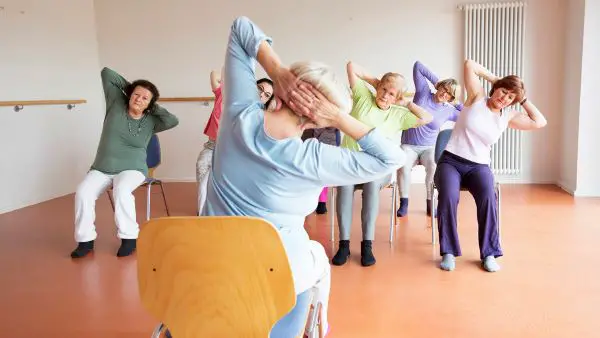
Finally, chair exercise is an excellent way of doing low-impact exercises, especially for those who are less mobile. You can participate in modified yoga classes that use postures specifically for stretching all parts of the body while sitting in a chair. Chair exercises for seniors are very popular because it allows them to work on their muscle strengthening and strengthening in a comfortable way. There are many videos online that can be used to learn the different stretches you can do. Sitting in a chair all day can have a lot of negative impacts on the body and overall health, so participating in these exercises for at least 15 minutes per day can have benefits for your heart health, blood pressure, muscle strength, and help reduce the chances of falls.
What exercises should seniors avoid?
It is best to avoid any exercises that can re-injure previously injured areas on the body. Exercising should not cause any extreme discomfort in any part of the body. If you feel pain you should stop immediately and consult with a doctor before continuing to do the exercise again. Listen to what your body is telling you.